*NURSING > QUESTIONS & ANSWERS > RN 3020 - NURSING RN 3020 Chapter 15. Neurological System; Latest 2019/20 complete solution. (All)
RN 3020 - NURSING RN 3020 Chapter 15. Neurological System; Latest 2019/20 complete solution.
Document Content and Description Below
NURSING RN 3020 Chapter 15. Neurological System Multiple Choice Identify the choice that best completes the statement or answers the question. 1. When carrying out a mental status exam on a n... on-English speaking patient, it is important to have a(n): A. Patient’s family member, who is bilingual, interpret for the patient B. Objective interpreter ask the questions for the patient C. Friend of the patient interpret the questions for the patient D. Any of the above is acceptable 2. When examining the carotid arteries, the clinician should: A. Ask the patient to hold his/her breath while auscultating the carotid arteries B. Use the bell of the stethoscope to listen over the carotid arteries C. Palpate one carotid artery at a time D. All of the above 3. A 44-year-old male presents to the emergency room with the “worst headache of his life.” He is holding his head and appears severely distressed. This is a patient symptom that should prompt a clinician to look for signs of a: A. Migraine headache B. Subdural hematoma C. Subarachnoid haemorrhage D. Brain tumor 4. An 8-year-old child presents to the emergency room with a severe unilateral, throbbing headache. She is lying on the gurney with her eyes closed while holding her head. She denies ever having this kind of headache in the past. She complains of sensitivity to light and noise. An appropriate history question to ask the parent would be: A. What do you think triggered the headache? B. Have you had a fever? C. Does anyone in your family suffer from migraine headache? D. B and C 5. A 41-year-old male patient presents to the emergency department complaining of severe headache pain. He describes it as a piercing, right sided head pain that occurred earlier in day for about 1 hour and now is recurring. You note lacrimation and rhinorrhea on the right side of the face. Which of the following types of headache is the patient describing? A. Sinusitis B. Cluster headache C. Migraine D. Subdural hematoma 6. An 85-year-old female patient arrives by ambulance to the emergency department accompanied by her husband. He reports that his wife had been ill with pneumonia and, 2 days ago, went to the family physician who prescribed azithromycin twice a day. The husband reports that he is making sure she gets the medicine. His wife has been staying in bed and resting. She awoke from sleep last night and was extremely agitated, left the house, and was walking outside. She did not recognize her husband and wanted to call the police. Which of the following is an appropriate question for the history? A. Does your wife have dementia or frequent episodes of confusion? B. Has your wife been running a fever? C. Is your wife allergic to any medication? D. Has your wife ever had a mental status exam? 7. A 60-year-old female complains of several episodes of dizziness and nausea that started this morning. She denies trauma, falling, or loss of consciousness. She has a 5-year history of hypertension and takes a beta blocker daily. On physical examination, there are no neurologic deficits or any abnormal findings and ECG is normal. Which of the following tests should be performed? A. Test the patient for Kernig’s sign B. Test the patient for Brudzinski sign C. Perform the Hallpike maneuver D. Assess for Babinski’s sign 8. Ménière’s ’disease presents with the following triad of symptoms: A. Vertigo, nystagmus, hearing loss B. Vertigo, tinnitus, hearing loss C. Vertigo, syncope, hearing loss D. None of the above 9. A 77-year-old male is brought into the emergency department accompanied by his daughter. She reports that her father has been complaining of right-handed weakness for 2 to 3 hours and that she has noticed him slurring his speech. On physical examination, the right hand grip strength is 1/ 5 compared to the left hand grip of 5/5. A facial droop is noted on the right side of the face. Cranial nerve dysfunction is noted in the right-sided CNVII, CN V, CNIX, CNX, CNXI, and CNXII. The clinician should request the following diagnostic test immediately: A. MRI of head B. CT of the head C. Lumbar puncture D. ECG 10. A female patient presents to the clinic with complaints of a severe, throbbing, unilateral headache. She complains of seeing flashes of light prior to the headache. She complains of sound and light sensitivity as well as nausea. The clinician should recognize these as symptoms of: A. Epilepsy with aura B. Cluster headache C. Migraine headache D. Normal pressure hydrocephalus 11. On a history and physical examination of a 34-year-old patient, during the review of systems, he reports occasional episodes of headache. He describes the headache pain as a “band is around his head” and tightness in the neck and shoulders. The clinician should recognize these symptoms as: A. Tension headache B. Cluster headache C. Sinusitis D. Migraine headache 12. An 81-year-old patient with heart failure comes into the emergency room accompanied by his daughter. The daughter reports that her father “banged his head” as he was getting out of the car 4 days ago. He did not complain of headache pain, so she did not obtain medical advice. She reports that she noticed a mild facial droop, slurring of speech, and gait disturbance in her father today. She reports that her father takes Coumadin, digoxin, and an ACE inhibitor. On physical examination, there is decreased right hand grip 2/5 strength and decreased right quadriceps strength 2/ 5 compared to the left side 5/5. CT scan shows an intracranial bleed. Which of the following is the most probable diagnosis? A. Subarachnoid hemorrhage B. Epidural hematoma C. Subdural hematoma D. Intracerebral hemorrhage 13. Which of the following microorganisms is a common cause of meningitis? A. Enterococcus B. Haemophilus influenza C. Influenza virus D. Chlamydia 14. A 43-year-old male presents to the emergency department in a stupor accompanied by his wife. She called the ambulance because her husband was difficult to awaken this morning. She reports that for the last 3 days, he has had fever and upper respiratory infection. Yesterday he had a headache. He has had no medical treatment. On physical examination, the patient demonstrates 103 fever, sluggish pupil response, and nuchal rigidity. Which of the following should the clinician attempt to elicit next? A. Hallpike maneuver B. Kernig’s sign C. Epley maneuver D. Babinski’s sign 15. Spina bifida is a disorder that is associated with a headache syndrome caused by: A. Chiari malformation B. Normal pressure hydrocephalus C. Meningioma D. Temporal arteritis 16. Which of the following is a common trigger of migraine headache? A. Missed meals B. Menses C. Alcohol D. All of the above 17. Your patient with a cervical herniated disc presents with a weakened biceps reflex. The biceps reflex is a test of the following spinal nerves: A. C3 to C4 B. C4 to C5 C. C5 to C6 D. C7 to T1 18. In order to test abstract thought on the mental status exam, the clinician can ask: A. Count by serial 7’s backward B. Spell the word “world” backward C. Draw a clock that shows 2:30 D. How is your brother-in-law related to you? 19. A 56-year-old woman brings her 78-year-old father to the emergency room. The patient complains that sometimes he can’t think straight. His daughter reports that her father has been “tripping over his own feet” and has become incontinent of urine in the last few days. The patient’s medications include an ACE inhibitor and beta blocker. On physical examination, vital signs are within normal limits, heart and lungs show no abnormalities, cranial nerves are intact, and sensation and muscle strength are normal. A mental status exam is normal. Imbalanced gait and a positive Romberg test are apparent. Which of the following are possible disorders? A. Cerebellar dysfunction B. Normal pressure hydrocephalus C. Early dementia D. A & B 20. A 65-year-old woman is accompanied by her daughter for a physical examination. She has mild heart failure and takes digitalis and an ACE inhibitor. As you examine the patient, you note flat affect, hand tremor, and slowed movements. The tremor is worsened at rest. There are no neurologic deficits. Hand grip, sensation of face and extremities, and lower extremity muscle strength are within normal limits and bilaterally equal. DTRs are equal bilaterally. CN II to XII are intact. The mental status exam is normal. These are key signs of: A. Chiari malformation B. Normal pressure hydrocephalus C. Parkinson’s disease D. Drug toxicity 21. A 65-year-old male complains of a headache that feels “like a knife is cutting into his head.” He also reports feeling right-sided scalp and facial pain and “seeing double” at times. He has a history of hypertension and hyperlipidemia. His medications include beta blocker, statin drug, and an ACE inhibitor. On physical examination, you note palpable tenderness over the right side of the forehead. There are no neurological deficits. Vision is 20/20 with lenses. No weakness of extremities. CN II to XII are intact. The history corresponds to which of the following disorders? A. Drug toxicity B. Giant cell arteritis C. Cluster headache D. Migraine headache 22. In dementia, which of the following cognitive functions is most commonly lost first? A. Recognizing persons B. Knowing the place C. Estimating the time D. Long-term memory 23. A 78-year-old female comes to the clinic for a physical examination. She is accompanied by her daughter and looks to her daughter to answer questions during the interview. She was diagnosed with early Alzheimer’s disease 2 years ago, and her daughter would like her current mental status evaluated. You ask the patient her daughter’s name, and she answers correctly. You ask her the date and time, and she answers incorrectly. You hand the patient a pencil and ask her if she knows what it is. She replies with, “Is it a stick?” You ask the patient to put on a patient gown, and she does not know how to perform the task. These are examples of disorientation to time and: A. Agnosia and apraxia B. Anomia and aphasia C. Agnosia and ataxia D. Apathy and ataxia 24. You are an emergency room clinician that assisted with CPR on a 20-year-old trauma patient. The CPR was unsuccessful, the patient expired, and you need to explain this to the family in the waiting room. Upon telling the mother about the death of her son, she becomes dizzy and faints. What is the most likely cause for the woman fainting? A. Cardiogenic shock B. Vasovagal response C. Syncope due to hypoxia D. Dizziness and vertigo 25. An 88-year-old female is accompanied by her daughter to the emergency department. The daughter explains that her mother was having her hair washed at the beauty salon, then complained of dizziness and fainted. The 88-year-old patient has a history of hypertension for which she takes a beta blocker. Otherwise she was in her usual state of health until this incident. On examination, she has no neurological deficits. Which of the following conditions should be considered? A. Benign positional vertigo B. Wertebrobasilar insufficiency C. Labyrinthitis D. Dehydration [Show More]
Last updated: 1 year ago
Preview 1 out of 12 pages
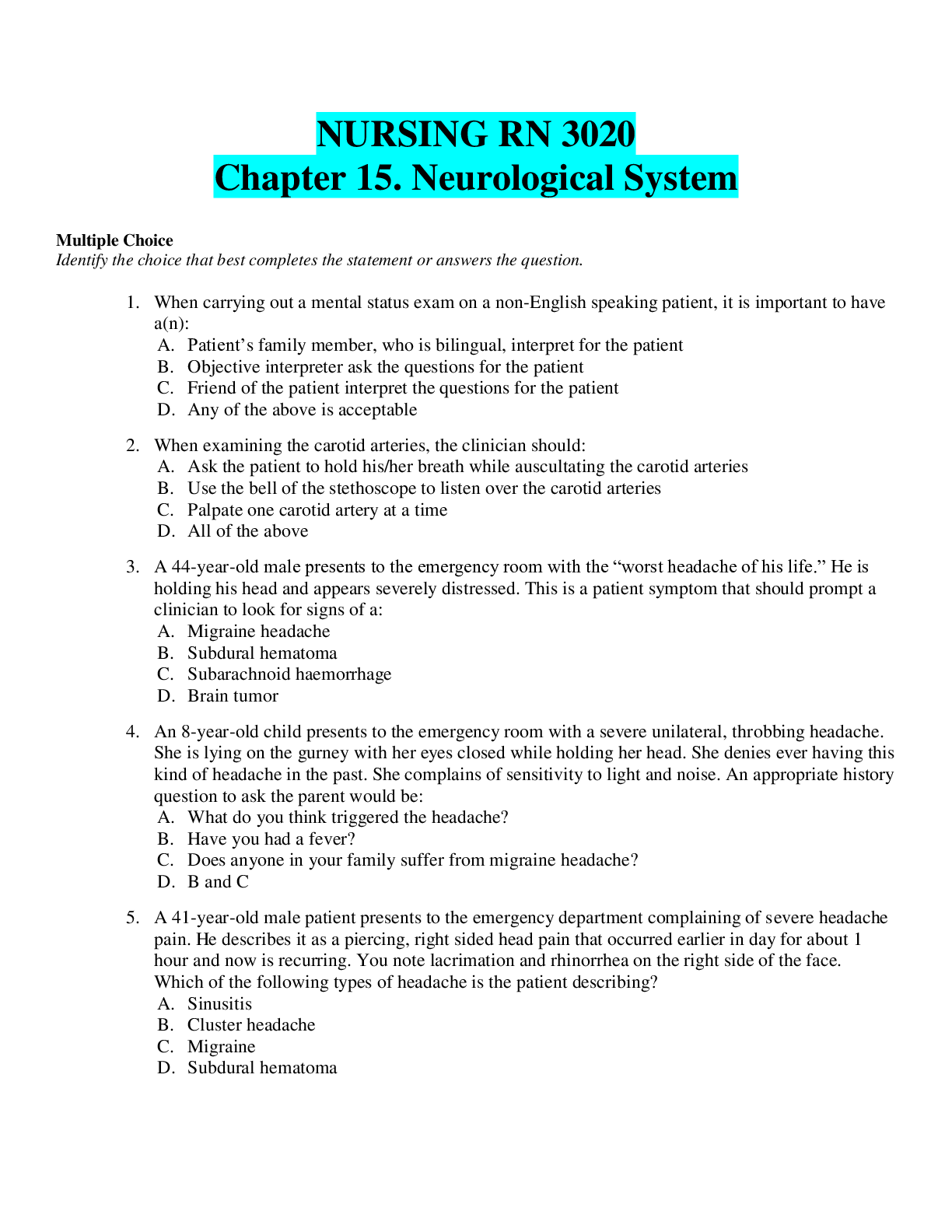
Buy this document to get the full access instantly
Instant Download Access after purchase
Add to cartInstant download
We Accept:

Reviews( 0 )
$9.00
Document information
Connected school, study & course
About the document
Uploaded On
Mar 02, 2020
Number of pages
12
Written in
Additional information
This document has been written for:
Uploaded
Mar 02, 2020
Downloads
1
Views
54

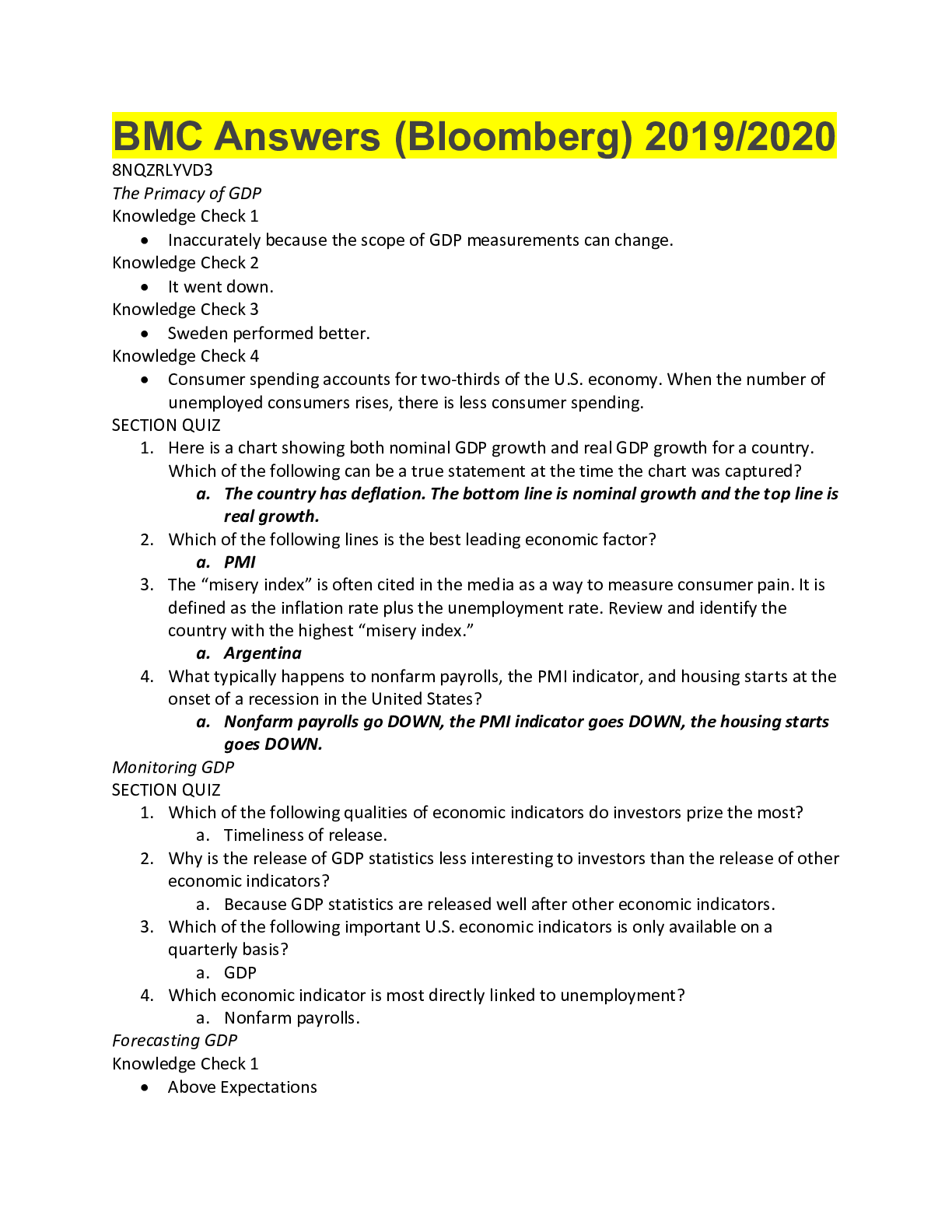
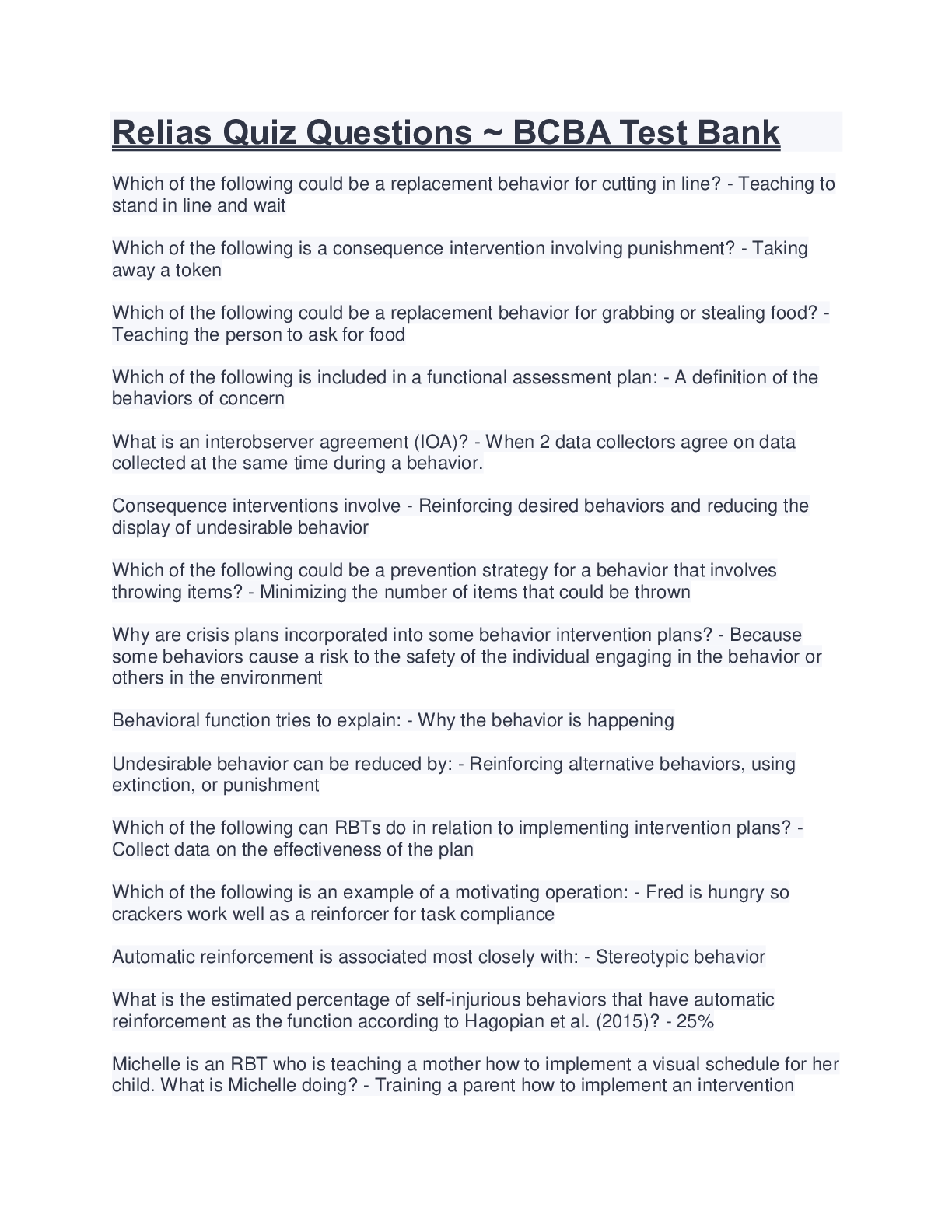
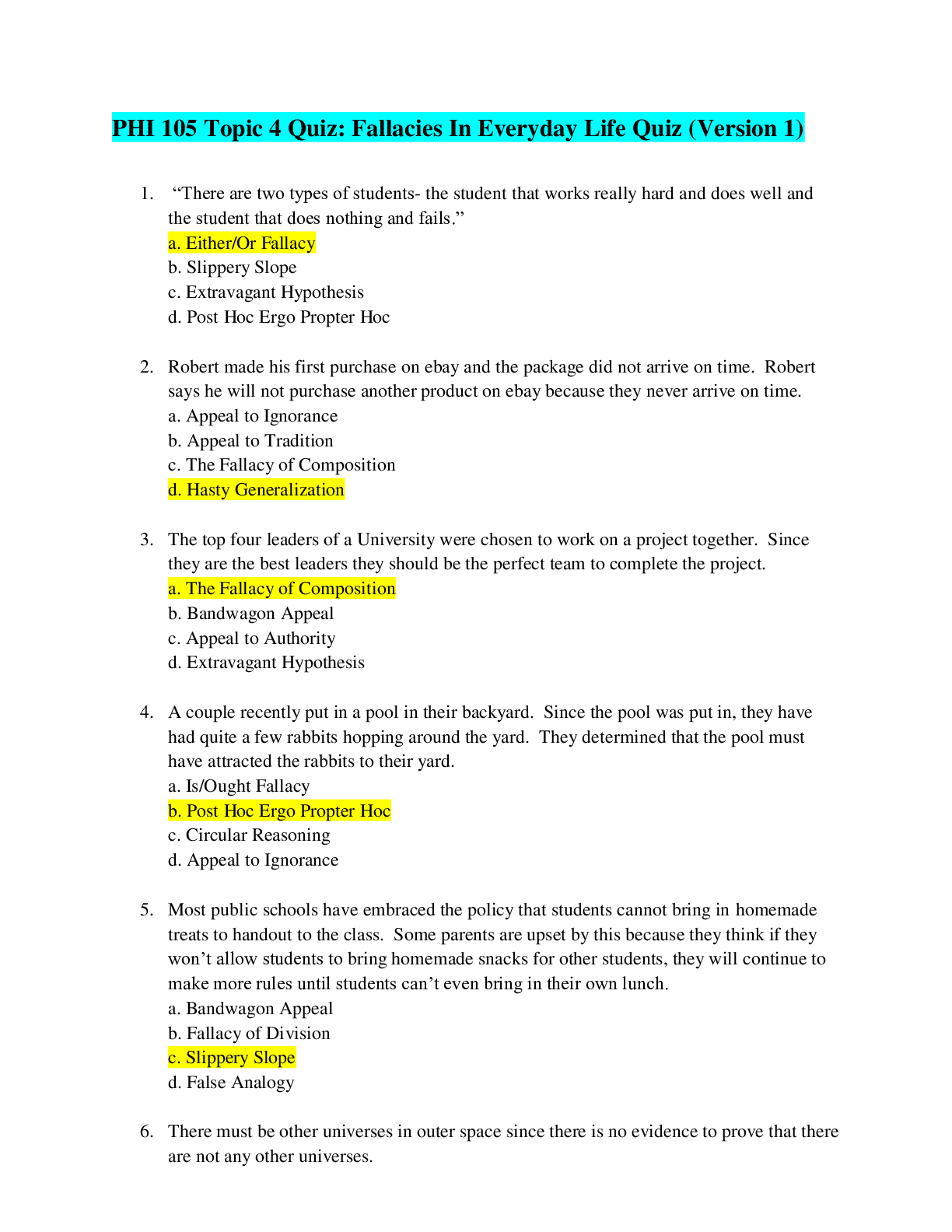


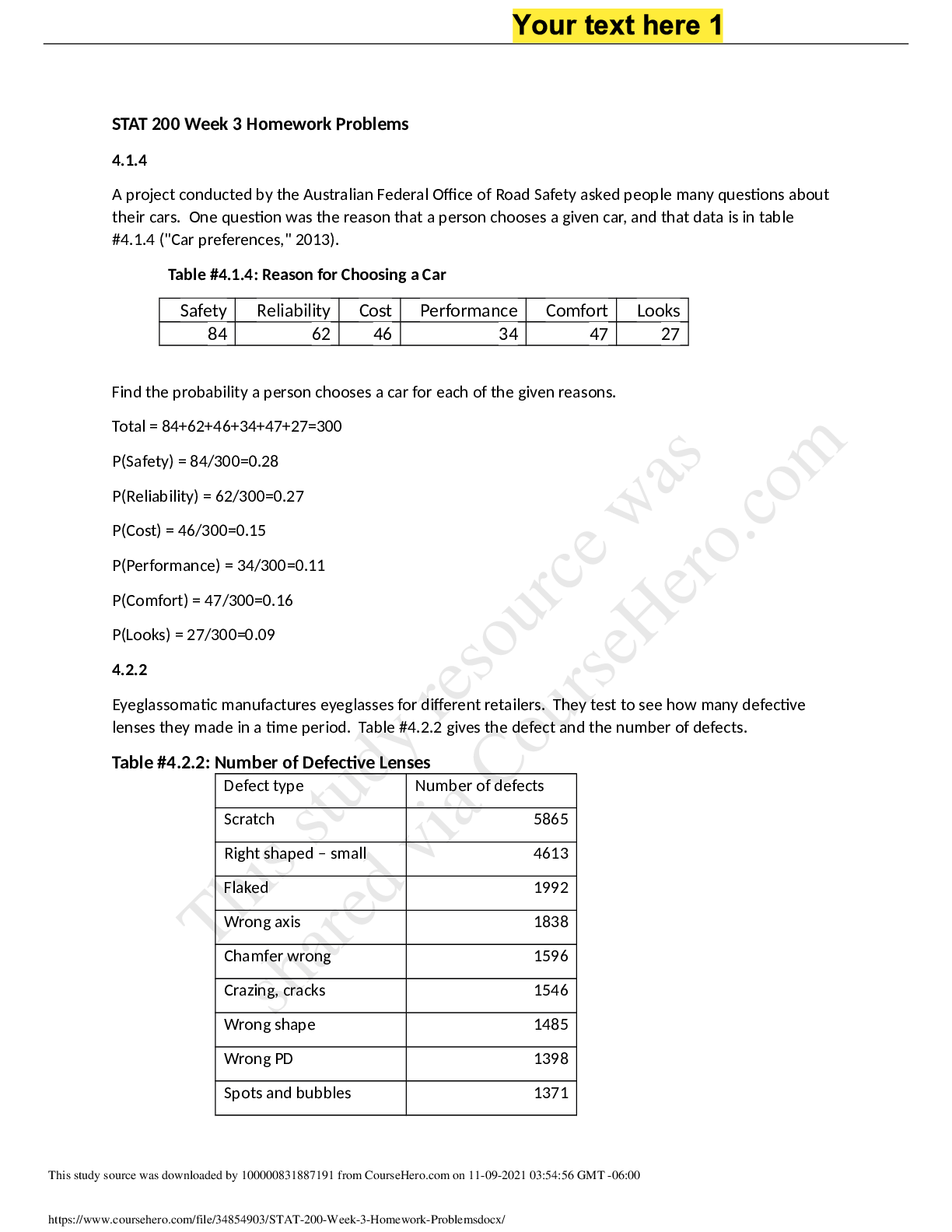

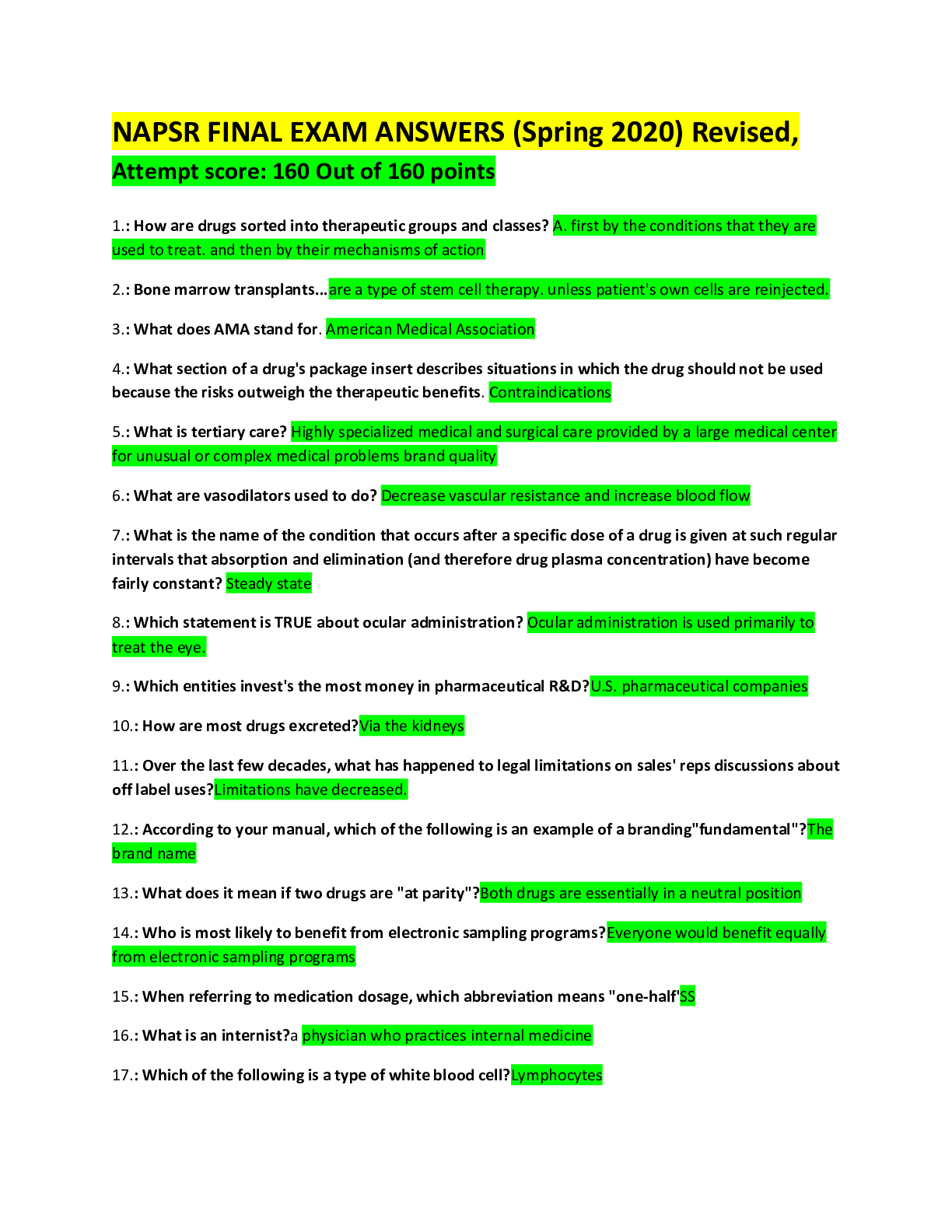

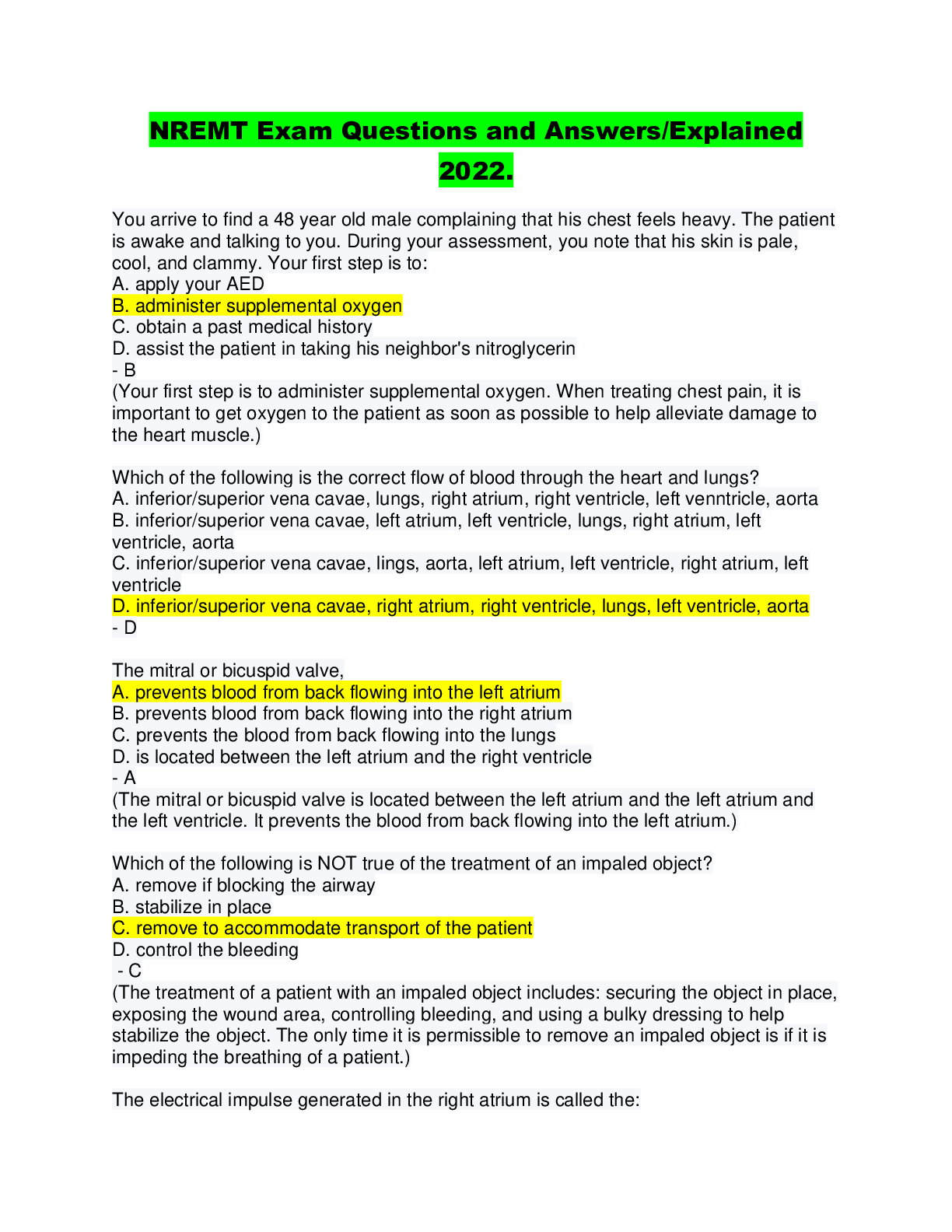
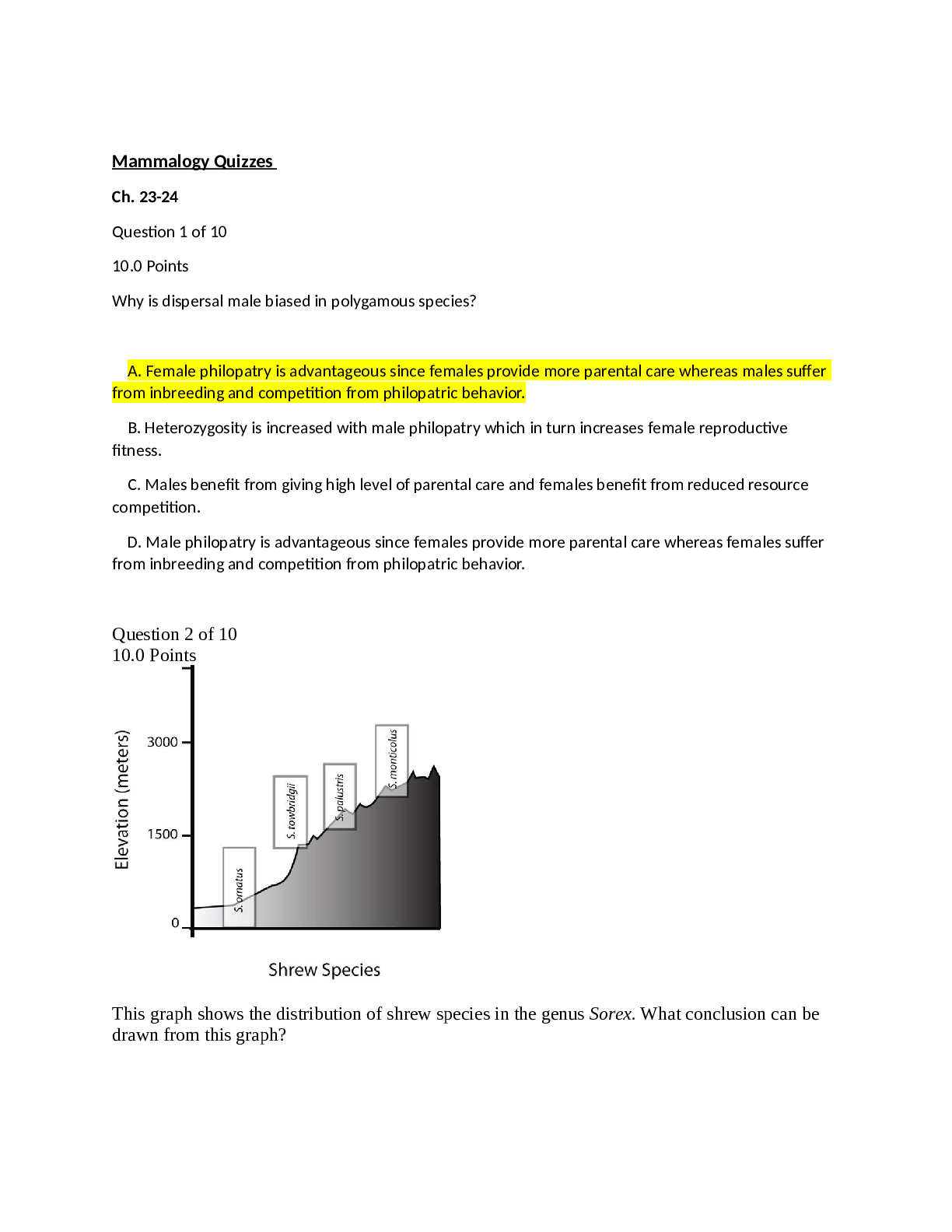
.png)

